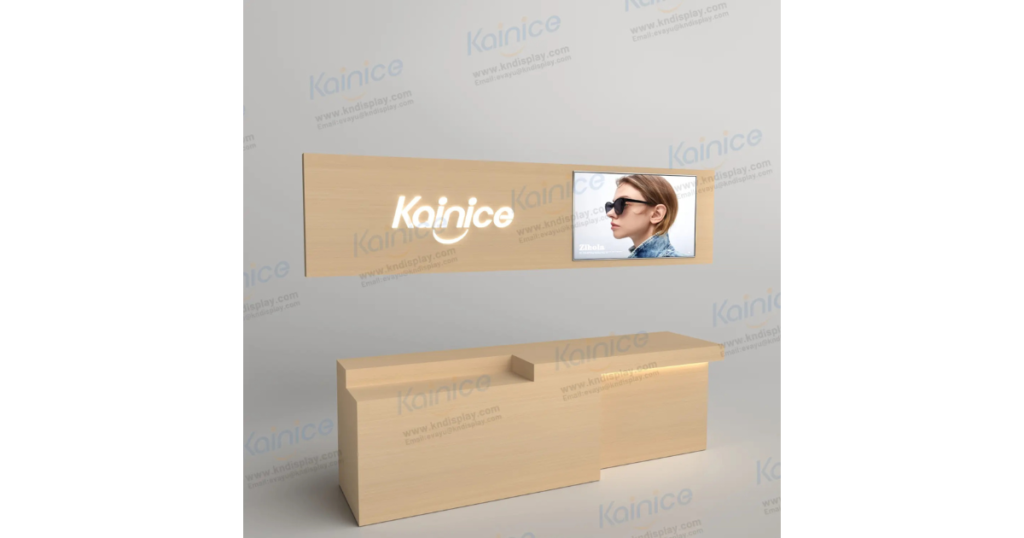In retail, a well-designed counter can help optimize customers’ experiences and positively embody a brand’s identity. This blog focuses on identifying key retail counter determinants for the prospective buyer’s counter operational and aesthetic needs.
Assessing Your Retail Space
Though a basic understanding of counters can help one sell a wider range of counters, it is important to first understand the retail environment. Store layout, dimensions, and customer traffic and interaction are important to consider as they affect counter design placement and proportion. For example, a tire counter may be more suitable for a narrow retail corridor as a compact tire counter may be easier and more encouraging to customers. Conversely, a loose retail corridor may be more suited to a spacious counter as customers are more likely to frequent the counter. Understanding these spatial and design principles will enable a buyer to maximize counter design purpose and store aesthetic.
Types of Counters Available
Counters come in a variety of styles and serve different functions. For retail purposes, counters can be defined as checkout, service, or display counters. The checkout counters complete transactions, service counters are for inquiries, and display counters are for showcasing products. Knowing what your counters functions are will greatly help your selection process in relation to your business.
Material and Durability
The material your counter is made from is yet another important consideration. Choices can be wood, metal, glass, or laminate. Each material will afford you different experiences of durability, maintenance, and aesthetic appeal. For instance, warm and inviting wooden counters will need more maintenance compared to metal and laminate. An evaluation of your retail environment and your customers will help you decide the counter material that will serve your design and durability needs.
Sizing and Dimensions
When designing your counter, ensure it’s the right size in relation to both your store and your functional needs. An oversized counter can overwhelm a small store and an undersized counter may not fulfill its purpose adequately. Measuring the height, width, and depth of the space where the counter will go is a necessary step. Also think about the counter height in relation to your audience. For example, a counter that is lower and easier to access may serve children and those with disabilities better.
Aesthetic Appeal and Branding
Since the counter is the first place customers come in contact with, it’s important to think of its design with branding in mind. The counter’s visual design should be in alignment with your brand and be appealing to the customers you’re trying to attract. Think about colors, finishing touches, and elements like signs and lights that could be used to increase the counter’s aesthetic value. Such a counter is an important investment as it leaves a positive lasting impression that can bring in loyal customers.
Functionality and Features
When deciding on a counter, beauty is nice, but function is the most important. Look for the features that best fit your operations, whether that be the storage space, the cash register area, or the in-built payment processors. Some counters have shelves or drawers that help keep and maintain order in your space. Evaluate your operations to determine the most important features your counter needs to offer in order to improve your productivity and assist your customers effectively.
Budget Considerations
When selecting a counter, considering your budget is essential. Because counters and materials that are used for them vary greatly in price, there are counters that are more affordable and counters that are more expensive depending on materials used, size, and other custom features. Quality and durability is important, so be sure to set a budget that makes sense for your business. The initial price of an counter that is well-made may be high, but the frequent maintenance and replacement that cheaper counters need will lead to higher costs over time.
Conclusion
Deciding which counter to place in your retail space is a multi-layered choice that affects your operations and your customers’ experience. You can find the counter that fulfills and anticipates your needs by considering space, type, material, size, looks, function, and cost. A counter can improve your store, optimize the flow of operations, and add to the success of your business.

